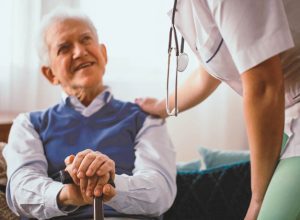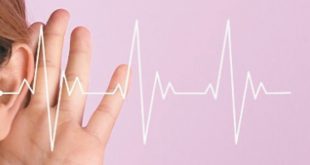

Parkinson’s disease is a progressive neurological disorder that affects the movement of the body. The degeneration of dopamine-producing neurons in the brain causes it. Dopamine is a neurotransmitter responsible for transmitting signals and controlling movement and coordination.
As a result of the loss of dopamine-producing neurons, individuals with Parkinson’s disease experience a variety of motor symptoms such as tremors, stiffness, and slowness of movement. They may also experience non-motor symptoms such as depression, anxiety, sleep disturbances, and cognitive changes. The onset of Parkinson’s disease is usually gradual, and symptoms can initially be mild. Over time, the symptoms can become more pronounced and can significantly impact daily activities and quality of life.
While there is currently no cure for Parkinson’s disease, medications and therapies are available to manage the symptoms. Treatment options may include dopamine replacement therapy, light therapy, physical therapy, speech therapy, and occupational therapy.
It is important to note that Parkinson’s disease is a highly individualized condition, and symptoms and disease progression can vary greatly from person to person. Therefore, it is important to work closely with a healthcare provider who can tailor a specific treatment plan to your needs.
Parkinson’s and Sleep
• According to the National Institute of Health, men are twice more likely to have Parkinson’s than women.
• While both women and men with PD tend to have similar symptoms with movement, men tend to have more difficulty with REM sleep behavior disorder (acting out physically while dreaming).
• Sleep is often negatively impacted by Parkinson’s. Men living with Parkinson’s report waking with stiffness and pain, making even small tasks more challenging.
• Difficulty with sleeping also negatively influences mood and can result in anxiety and/or depression.
• Although both men and women living with PD experience motor symptoms, some studies indicate that men may display more rigidity in movement while women may exhibit more tremors.
• There are many different treatment options for managing Parkinson’s symptoms, but several reported to make a difference in Quality of Life include consistent exercise and improved nutrition, focusing on a diet rich with fruit and vegetables that promote overall good health and brain functions.
How LASENE Can Help
Light therapy, also known as photobiomodulation therapy, is a non-invasive treatment approach that involves exposing the body to specific wavelengths of light to promote healing and reduce inflammation. While the exact mechanism by which light therapy may improve symptoms in Parkinson’s disease is not fully understood, there are several hypotheses on how it may work.
One hypothesis is that light therapy may help to improve communication between the brain and the nervous system. Studies have shown that light therapy can increase the production of certain neurotransmitters, such as dopamine, which is known to be deficient in Parkinson’s disease. By increasing the production of dopamine, light therapy may help to improve the communication between the brain and the nervous system, which could lead to improvements in motor and non-motor symptoms.
Another hypothesis is that light therapy may help to reduce inflammation in the brain. Inflammation is believed to play a role in the development and progression of Parkinson’s disease and reducing inflammation may help to slow disease progression and improve symptoms. Light therapy has been shown to reduce inflammation in animal models of Parkinson’s disease, and clinical trials are currently underway to investigate its potential in humans. One such study shows a 48% improvement in Sleep Quality – (problems falling asleep, balance, alertness, core functions).
Comments from Men or Family Members receiving the LASENE Therapy:
• Noted loss in Parkinson’s mask, and he smiles today. Also, improvement in gait and postural elevation.
• “I am taking naps once in a while before I was taking daily naps.”
• No freeze gait today. Doing good, getting up better from a chair.
• Gait is smoother, with less throwing of the arms and torso for forward momentum.
• “The whole laser thing, I had a little bit of ‘is this all good? I’m like, you know, is this going to burn anything?’ (laughs) So it was great for me to see and understand that there wasn’t any downside, but there was a bunch of upsides.”
• “It was so bad I was very symptomatic, and we were looking for walkers. This program has given me inspiration and hope.”
• “I used to look in the future and see this person in the wheelchair drooling, and now I don’t see that. That’s a horrible thing to see. And now I see improvement and I think I can stay that status quo. If I can just stay the way I am now, I’d be happy, really happy, and I think I can just stay like this.”
Lasene is bridging the gap between the world’s finest Therapeutic Light Treatments technology and proprietary advanced treatment protocols for rapid management of chronic pain and functional restoration of quality-of-life metrics for our patients living with Parkinson’s, sleep disorders, deterioration of executive function, and other neurological degenerative ailments.
Our Parkinson’s Program is part of a Lasene series of research-based protocols focusing on the world of pain management and neurological restoration. From our discoveries, we pioneer strategies to deliver safe, affordable, and effective care to assist those in need.
As the founders of Lasene, our mission is to bring the best of technologies and protocols together for the sole purpose of reducing the suffering associated with neurodegenerative and neuromusculoskeletal conditions and to bring our patients back to a more active and productive life.
239-374-2574 | www.lasene.com
15930 Old 41 Rd., Suite 400, Naples, FL 34110
 Southwest Florida's Health and Wellness Magazine Health and Wellness Articles
Southwest Florida's Health and Wellness Magazine Health and Wellness Articles

